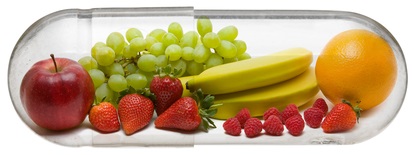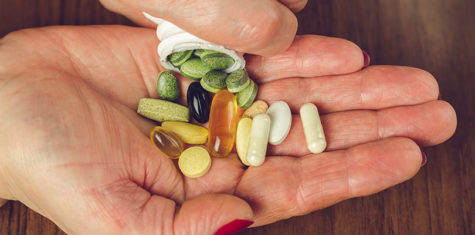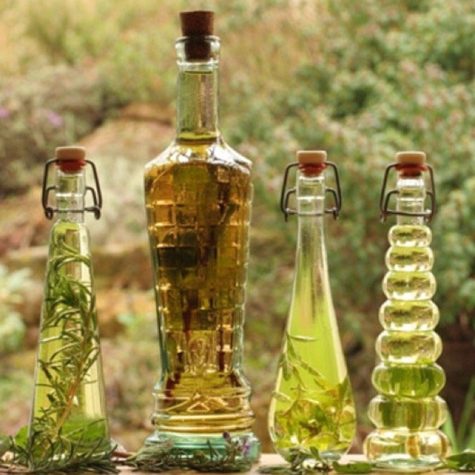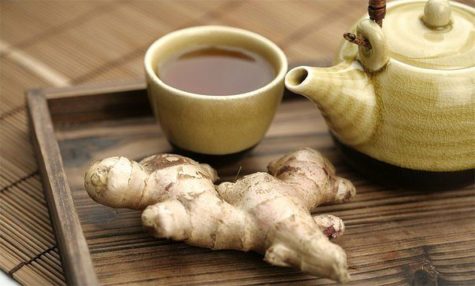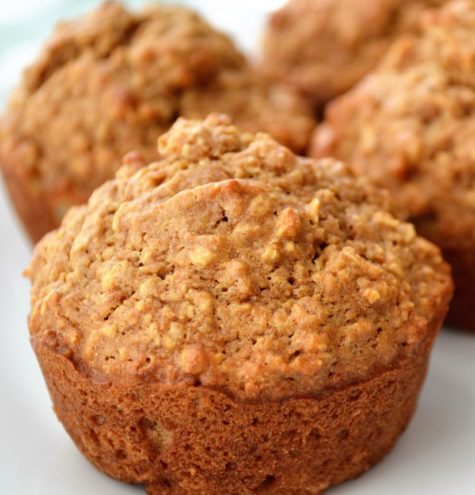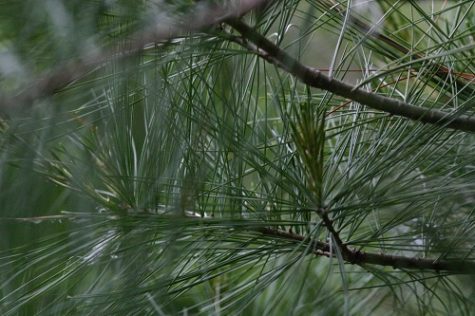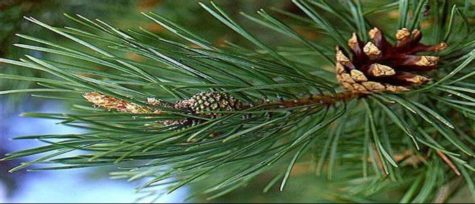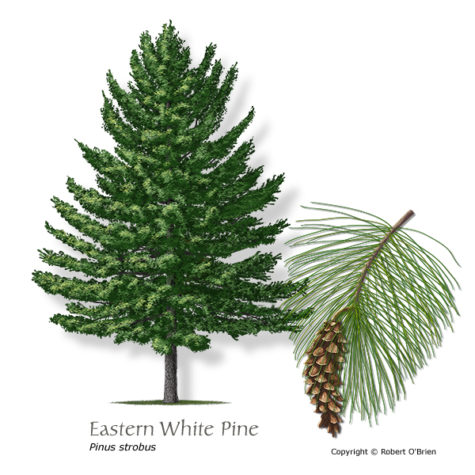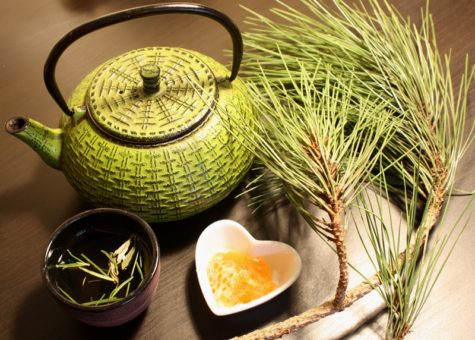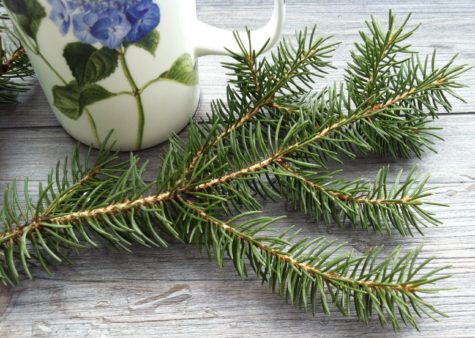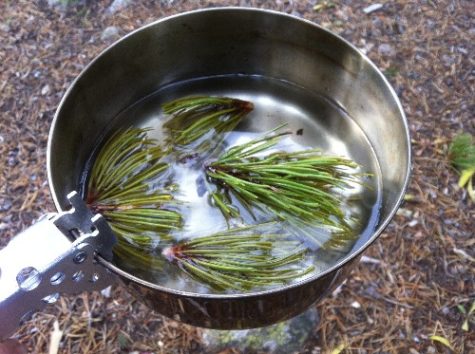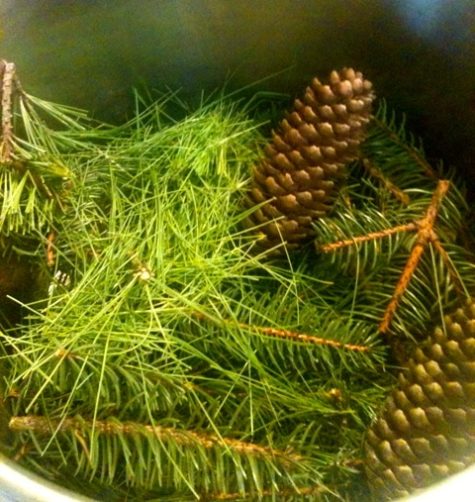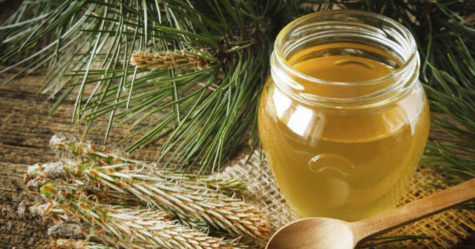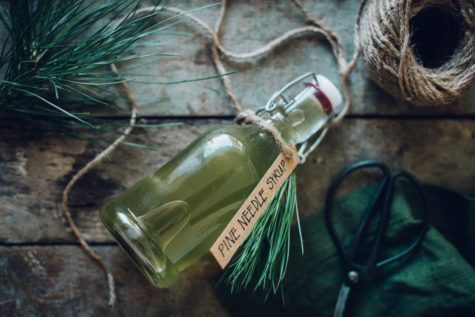About Minerals
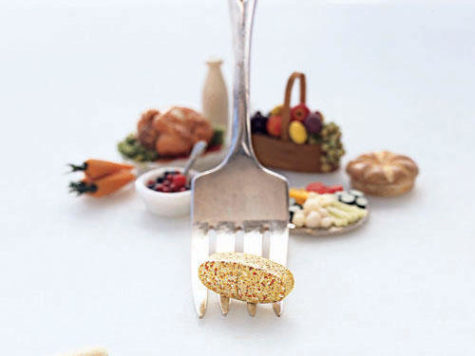 Minerals play an important role in every bodily function and are present in every human cell. Although the amount needed may be small, without even the trace of the mineral, dysfunction is bound to occur at some level in the body. A zinc deficiency may show up in ridged fingernails with white spots. Lack of sulfur can cause lack-luster hair and dull-looking skin. Less obvious deficiencies may surface as fatigue, irritability, loss of memory, nervousness, depression and weakness.
Minerals play an important role in every bodily function and are present in every human cell. Although the amount needed may be small, without even the trace of the mineral, dysfunction is bound to occur at some level in the body. A zinc deficiency may show up in ridged fingernails with white spots. Lack of sulfur can cause lack-luster hair and dull-looking skin. Less obvious deficiencies may surface as fatigue, irritability, loss of memory, nervousness, depression and weakness.
Minerals also interact with vitamins. Magnesium, for instance, must be present in the body for utilization of B-complex, C and E vitamins. Sulfur also works with the B-complex vitamins. The body needs all the trace minerals in proper balance.
Coffee, tea, alcohol, excess salt and many drugs can rob the body of minerals or make them ineffective. Industrial pollutants cause toxic minerals to enter the body. Minerals at toxic levels also have the effect of destroying the usefulness of other vitamins and minerals.
Exercise improves the activity of certain vitamins and minerals while stress and fatigue work against them. A well-balanced diet provides as abundance of minerals and vitamins. In refining cereals, grains and sugar, we have robbed them of their natural vitamins and minerals.
The dietary sources of these nutrients are whole grains, cereals, bran and germ. It is the bran and germ which are removed in processing. To obtain a balance of nutrients, it is, therefore, necessary to avoid refined and processed foods but an intake of adequate green leafy vegetables which are an excellent source of many nutrients should be ensured.
The mineral elements which are needed by the body in substantial amounts are calcium, phosphorous, iron, sulfur, magnesium, sodium, potassium and chlorine. In addition the body needs minute (trace) amounts of iodine, copper, cobalt, manganese, zinc, selenium, silicon, fluorine and some others.
The various functions of common minerals, their deficiency symptoms, and natural sources are discussed in brief as follows:
-
Calcium
The human body needs calcium more than any other mineral. A man weighing 70 kg. contains one kg. of calcium. About 99 per cent of the quantity in the body is used for building strong bones and teeth and the remaining one per cent is used by the blood, muscles and nerves.
Calcium performs many important functions. Without this mineral , the contractions of the heart would be faulty, the muscles would not contract properly to make the limbs move and blood would not clot. Calcium stimulates enzymes in the digestive process and coordinates the functions of all other minerals in the body.
Calcium is found in milk and milk products, whole wheat, leafy vegetables such as lettuce, spinach, and cabbage , carrots, watercress, oranges, lemons, almonds, figs and walnuts. Deficiency may cause porous and fragile bones, tooth decay, heart palpitations, muscle cramps, insomnia and irritability.
-
Phosphorus
It combines with calcium to create the calcium-phorphorus balance necessary for the growth of bones and teeth and in the formation of nerve cells. This mineral is also essential for the assimilation of carbohydrates and fats. It is a stimulant to the nerves and brain.
Phosphorous is found in abundance in cereals, pulses, nuts, egg yolk, fruit juices, milk and legumes. A phosphorous deficiency may bring about loss of weight, retarded growth, reduced sexual powers and general weakness. It may result in poor mineralization of bones, deficient nerve and brain function.
-
Iron
Iron is an important mineral which enters into the vital activity of the blood and glands. Iron exists chiefly as hemoglobin in the blood. It distributes the oxygen inhaled into the lungs to all the cells. It is the master mineral which creates warms, vitality and stamina. It is required for the healthy complexion and for building up resistance in the body.
The chief sources of iron are grapes, raisins, spinach, all green vegetables, whole grain, cereals, dried beans, dark colored fruits, beets, dates, liver and egg yolk.
Deficiency of dietary iron may cause nutritional-anemia, lowered resistance to disease, a general run down condition, pale complexion, shortness of breath on manual exertion and loss of interest in sex.
-
Sulphur
All living matter contains some sulphur; this element is therefore essential for life. The greater part of the sulphur in the human body is present in the two sulphur-containing amino acids, methionine and cysteine, or in the double form of the latter cystine.
The main purpose of sulphur is to dissolve waste materials. It helps to eject some of the waste and poisons from the system. It helps keep the skin clear of blemishes and makes hair glossy. It is also valuable in rheumatic conditions.
The main sulphur-containing foods are radishes, carrots, cabbage, cheese, dried beans, fish and eggs. A diet sufficient in protein will generally be adequate in sulphur. Deficiency of sulphur may cause eczema and imperfect development of hair and nails.
-
Magnesium
All human tissues contain small amounts of magnesium. Next to potassium, magnesium is the predominant metallic action in living cells. The bones seem to provide a reserve supply of this mineral in case of shortage elsewhere in the body. Biochemists call magnesium the “cool, alkaline, refreshing, sleep-promoting mineral”. Magnesium helps one keep calm and cool during the sweltering summer months. It aids in keeping nerves relaxed and normally balanced. It is necessary for all muscular activity.
This mineral is in activator for most of the enzyme system involving carbohydrate, fat and protein in energy-producing reactions. Magnesium promotes a healthier cardiovascular system and aids in fighting depression. It helps prevent calcium deposits in kidneys and gallstones and also brings relief from indigestion.
Magnesium is widely distributed in foods. It is a part of the chlorophyll in green vegetables. Other good sources of this mineral are nuts, soy beans, alfalfa, apples, figs, lemons, peaches, almonds, whole grains, brown rice, sunflower seeds and sesame seeds.
Deficiency can lead to kidney damage and kidney stones, muscle cramps, arteriosclerosis, heart attack, epileptic seizures, nervous irritability, marked depression and confusion, impaired protein metabolism and premature wrinkles.
-
Sodium
Sodium Chloride , the chemical name for common salt, contains 39 per cent of sodium, an element which never occurs in free form in nature. It is found in an associated form with many minerals especially in plentiful amounts with chlorine. Sodium is the most abundant chemical in the extra-cellular fluid of the body. It acts with other electrolytes, especially potassium, in the intracellular fluid, to regulate the osmotic pressure and maintain a proper water balance within the body. It is a major factor in maintaining acid-base equilibrium, in transmitting nerve impulses, and in relaxing muscles. It is also required for glucose absorption and for the transport of other nutrients across cell membranes.
There is some natural salt in every food we eat. Vegetable foods rich in sodium are celery, cucumbers, watermelon, lemons, oranges, grapefruit, beet-tops, cabbage, lettuce, corn, lady’s fingers, apple, berries, pears, squash, pumpkin, peaches, lentils, almonds and walnuts. Animal food sources include shell fish, lean beef, kidney, bacon and cheese.
Both deficiency and excess of salt may produce adverse effects on the human body. Deficiencies of sodium are, however, rare and may be caused by excessive sweating, prolonged use of diuretics, or chronic diarrhea. Deficiency may lead to nausea, muscular weakness, heat exhaustion, mental apathy and respiratory failure.
Over-supply of sodium is a more common problem because of overuse of dietary sodium chloride or common salt. Too much sodium may lead to water retention, high blood pressure, stomach ulcers, stomach cancer, hardening of arteries and heart disease.
-
Potassium
Potassium is essential to the life of every cell of a living being and is among the most generously and widely distributed of all the tissue minerals. Potassium is important as an alkalizing agent in keeping a proper acid-alkaline balance in the blood and tissues. It is essential for muscle contraction and therefore, important for proper heart function. It promotes the secretion of hormones and helps the kidneys in detoxification of blood. Potassium prevents female disorders by stimulating the endocrine hormone production. It is involved in the proper functioning of the nervous system and helps overcome fatigue. It also aids in clear thinking by sending oxygen to the brain and assists in reducing blood pressure.
Potassium is widely distributed in foods. All vegetables, especially green, leafy vegetables, grapes, oranges, lemons, raisins, whole grains, lentils, sunflower seeds, nuts, milk, cottage cheese and butter milk are rich sources. Potatoes, especial potato peelings, and bananas are especially good sources.
Potassium deficiency may occur during gastrointestinal disturbances with severe vomiting and diarrhea, diabetic acidosis and potassium-losing nephritis. It causes undue nervous and body tiredness, palpitation of the heart, cloudiness of the mind, nervous shaking of the hands and feet, great sensitivity of the nerves to cold, and excessive perspiration of the feet and hands.
-
Chlorine
This food element is necessary for the manufacture of glandular hormone secretions. It prevents the building of excessive fat and auto-intoxication. Chlorine regulates the blood’s alkaline -acid balance and works with Potassium in a compound form. It aids in the cleaning out of body waste by helping the liver to function.
Chlorine is found in cheese and other milk products, green leafy vegetables, tomatoes, all berries, rice, radishes, lentils, coconuts and egg yolk. Deficiency of this mineral can cause loss of hair and teeth.
-
Iodine
The chief store-house of iodine in the body is the thyroid gland. The essential thyroxine, which is secreted by this gland, is made by the circulating iodine. Thyroxine is a wonder chemical which controls the basic metabolism and oxygen consumption of tissues. It increases the heart rate as well as urinary calcium excretion. Iodine regulates the rate of energy production and body weight and promotes proper growth. It improves mental alacrity and promotes healthy hair, nails, skin and teeth.
The best dietary sources of iodine are kelp and other seaweeds. Other good sources are turnip greens, garlic, watercress, pineapples, pears, artichokes, citrus fruits, egg yolk and seafood and fish liver oils. Deficiency can cause goiter and enlargement of the thyroid glands.
-
Copper
This mineral helps in the conversion of iron into hemoglobin. It stimulates the growth of red blood cells. It is also an integral part of certain digestive enzymes. It makes the amino acid tyrosine usable, enabling it to work as the pigmentation factor for hair and skin. It is also essential for the utilization of vitamin C.
Copper is found in most foods containing iron, especially in almonds, dried beans, peas, lentils, whole wheat, prunes and egg yolk. A copper deficiency may result in bodily weakness, digestive disturbances and impaired respiration.
-
Cobalt
Cobalt is a component of vitamin B12, a nutritional factor necessary for the formation of red blood cells. Recent research in vitamin B12 has shown that its pink color is attributed to the presence of cobalt in it. The presence of this mineral in foods helps the synthesis of hemoglobin and the absorption of food-iron.
The best dietary sources of cobalt are meat, kidney and liver. All green leafy vegetables contain some amount of this mineral.
-
Manganese
This mineral helps nourish the nerves and brain and aids in the coordination of nerve impulses and muscular actions. It helps eliminate fatigue and reduces nervous irritability.
Manganese is found in citrus fruits, the outer covering of nuts, grains, in the green leaves of edible plants, fish and raw egg yolk. A deficiency of this mineral can lead to dizziness, poor elasticity in the muscles, confused thinking and poor memory.
-
Zinc
Our need for this mineral is small but its role in growth and well-being is enormous, starting before birth. It is needed for healthy skin and hair, proper healing of wounds, successful pregnancies and male virility. It plays a vital role in guarding against diseases and infection. It is needed to transport vitamin A to the retina. There are 156 enzymes that require zinc for their functioning. It has long been known that growth and sexual maturity depend on zinc.
The main dietary sources of zinc are milk, liver, beans, meat, whole grains, nuts, and seeds. Deficiency can result in weight loss, skin diseases, loss of hair, poor appetite, diarrhea and frequent infection. Those suffering from rheumatoid arthritis may have a zinc deficiency. Heavy drinkers lose a lot of zinc in their urine.
-
Selenium
Selenium and vitamin E are synergistic and the two together are stronger than the sum of the equal parts. Selenium slows down ageing and hardening of tissues through oxidation. Males seem to have a greater need for this mineral.
Selenium is useful in keeping youthful elasticity in tissues. It alleviates hot flushes and menopausal distress. It also helps in the prevention and treatment of dandruff.
This mineral is found in Brewer’s yeast, garlic, onions, tomatoes, eggs, milk and sea food. Deficiency of this mineral can cause premature loss of stamina.
-
Silicon
This is known as the ” beauty mineral ” as it is essential for the growth of skin, hair shafts, nails and other outer coverings of the body. It also makes the eyes bright and assists in hardening the enamel of the teeth. It is beneficial in all healing process and protects body against many diseases such as tuberculosis, irritations in mucous membranes and skin disorders.
Silicon is found in apples, cherries, grapes, asparagus, beets, onions, almonds, honey, peanuts and the juices of the green leaves of most other vegetables. Deficiency can lead to soft brittle nails, ageing symptoms of skin such as wrinkles, thinning or loss of hair, poor bone development, insomnia, osteoporosis.
-
Flourine
Fluorine is the element that prevents diseases from decaying the body. It is a germicide, and acts as an antidote to poison, sickness and disease. There is a strong affinity between calcium and fluorine. These two elements, when combined, work particularly in the outer parts of bones. They are found in the enamel of the teeth and the shiny, highly polished bone surface.
Fluorine is found in goat’s milk, cauliflower, watercress, garlic, beets, cabbage, spinach and pistachio nuts.
Source:
This information came from A Complete Handbook of Nature Cure, a complete handbook of Naturapathic Medicine. For more in depth information on vitamins, and vitamin therapy visit this post, The Importance of Minerals, over at Alternative Therapies.
About Vitamins
Vitamins are potent organic compounds which are found in small concentrations in foods. They perform specific and vital functions in the body chemistry. They are like electric sparks which help to run human motors. Except for a few exceptions, they cannot be manufactured or synthesized by the organism and their absence or improper absorption results in specific deficiency disease.
Vitamins A, D, E and K are all soluble in fat and fat solvents and are therefore, known as fat-soluble. They are not easily lost by ordinary cooking methods and they can be stored in the body to some extent, mostly in the liver. They are measured in international units.
Vitamin B Complex and C are water soluble. They are dissolved easily in cooking water. A portion of these vitamins may actually be destroyed by heating. They cannot be stored in body and hence they have to be taken daily in foods. Any extra quantity taken in any one day is eliminated as waste. Their values are given in milligrams and micrograms, whichever is appropriate.
The various functions of common vitamins, their deficiency symptoms, and natural sources are discussed in brief as follows:
Vitamin A
Known as anti-opathalmic, vitamin A is essential for growth and vitality. It builds up resistance to respiratory and other infections and works mainly on the eyes, lungs, stomach and intestines. It prevents eye diseases and plays a vital role in nourishing the skin and hair. It helps to prevent premature ageing and senility, increases life expectancy and extends youthfulness.
The main sources of this vitamin are fish liver oil, liver, whole milk, curds, pure ghee, butter, cheese, cream and egg yolk, green leafy and certain yellow root vegetables such as spinach, lettuce, turnip, beets, carrot, cabbage and tomato and ripe fruits such as prunes, mangoes, papaya, apricots, peaches, almonds and other dry fruits.
A prolonged deficiency of vitamin A may result in inflammation of the eyes, poor vision frequent colds, night blindness and increased susceptibility to infections, lack of appetite and vigor, defective teeth and gums and skin disorders.
B Complex Vitamins
There are a large variety of vitamins in the B group, the more important being B1 or thiamine, B2 or riboflavin, B3 or niacin or nicotinic acid, B6 or pyridoxine, B9 or folic acid, B12 and B5 or pantothenic acid. B vitamins are synergistic. They are more potent together than when used separately.
- Thiamine
Known as anti-beberi, anti-neuritic and anti-ageing vitamin, thiamine plays an important role in the normal functioning of the nervous system, the regulation of carbohydrates and good digestion. It protects heart muscle, stimulates brain action and helps prevent constipation. It has a mild diuretic effect.
Valuable sources of this vitamin are wheat germ, yeast, the outer layer of whole grains, cereals, pulses,nuts, peas, legumes, dark green leafy vegetables, milk, egg,banana and apple.
The deficiency of thiamine can cause serious impairment of the digestive system and chronic constipation, loss of weight, diabetes, mental depression, nervous exhaustion and weakness of the heart.
- Riboflavin
Vitamin B2 or riboflavin, also known as vitamin G, is essential for growth and general health as also for healthy eyes, skin, nails and hair. It helps eliminate sore mouth, lips and tongue. It also functions with other substances to metabolize carbohydrates, fats, and protein.
The main sources of this vitamin are green leafy vegetables, milk, cheese, wheat germ, egg, almonds, sunflower, seeds, citrus fruits and tomatoes.
Its deficiency can cause a burning sensation in the legs, lips and tongue, oily skin, premature wrinkles on face and arm and eczema.
- Niacin
Vitamin B3 or niacin or nicotinic acid is essential for proper circulation, healthy functioning of the nervous system and proper protein and carbohydrate metabolism. It is essential for synthesis of sex hormones, cartisone, thyroxin and insulin. It is contained in liver, fish, poultry, peanut, whole wheat,green leafy vegetables, dates, figs, prunes and tomato.
A deficiency can lead to skin eruptions, frequent stools, mental depression, insomnia, chronic headaches, digestive disorders and anemia.
- Pyridoxine
Vitamin B 6 or pyridoxine is actually a group of substance – pyridoxine, pyridoxinal and pyridoxamine – that are closely related and function together. It helps in the absorption of fats and proteins, prevents nervous and skin disorders and protects against degenerative diseases.
The main sources of this vitamin are yeast, wheat, bran, wheat germ, pulses, cereals, banana, walnuts, soy beans, milk, egg, liver, meat and fresh vegetables.
Deficiency can lead to dermatitis, conjunctivitis, anemia, depression, skin disorders, nervousness, insomnia, migraine headaches and heart disease.
- Folic Acid
Vitamin B9 or folic acid, along with vitamin B12 is necessary for the formation of red blood cells. It is essential for the growth and division of all body cells for healing processes. It aids protein metabolism and helps prevent premature graying.
Valuable sources of this vitamin are deep green leafy vegetables such as spinach, lettuce, brewers yeast, mushrooms, nuts, peanuts and liver.
A deficiency can result in certain types of anemia, serious skin disorders, loss of hair, impaired circulation, fatigue and mental depression.
- Pantothenic Acid
Vitamin B5 or pantothenic acid helps in cell building, maintaining normal growth and development of the central nervous system. It stimulates the adrenal glands and increases the production of cortisone and other adrenal hormones. It is essential for conversion of fatty and sugar to energy. It also helps guard against most physical and mental stresses and toxins and increases vitality.
The main sources of this vitamin are whole grain bread and cereals, green vegetables, peas, beans, peanuts and egg yolk. It can be synthesized in the body by intestinal bacteria.
A deficiency can cause chronic fatigue, hypoglycemia, graying and loss of hair, mental depression, stomach disorders, blood and skin disorders.
- Vitamin B12
Vitamin B12 or cobolamin, commonly known as “red vitamin” , is the only vitamin that contains essential mineral elements. It is essential for proper functioning of the central nervous system, production and regeneration of red blood cells and proper utilization of fat, carbohydrates and protein for body building. It also improves concentration, memory and balance.
Valuable sources of this vitamin are kidney, liver, meat, milk, eggs, bananas and peanuts. Its deficiency can lead to certain types of anemia, poor appetite and loss of energy and mental disorders.
- Vitamin C
Vitamin C or ascorbic acid is essential for normal growth and the maintenance of practically all the body tissues, especially those of the joints, bones, teeth, and gums. It protects one against infections and acts as a harmless antibiotic. It promotes healing and serves as protection against all forms of stress and harmful effects of toxic chemicals. It helps prevent and cure the common cold. It also helps in decreasing blood cholesterol.
This vitamin is found in citrus fruits, berries, green and leafy vegetables, tomatoes, potatoes, sprouted sprouted bengal (a variety of chickpea) and green grams (mung beans).
A deficiency can cause scurvy marked by weakness, anemia, bleeding gums and painful and swollen parts, slow healing of sores and wounds, premature ageing and lowered resistance to all infections.
- Vitamin D
Vitamin D is necessary for proper bone and teeth formation and for the healthy functioning of the thyroid gland. It assists in the assimilation of calcium, phosphorus and other minerals from the digestive tract.
This vitamin is found in the rays of the sun, fish, milk, eggs, butter and sprouted seeds. A deficiency can cause gross deformation of bones and severe tooth decay.
- Vitamin E
Vitamin E is essential for normal reproductive functions, fertility and physical vigor. It prevents unsaturated fatty acids, sex hormones and fat soluble vitamins from being destroyed in the body by oxygen. It dilutes blood vessels and improves circulation. It is essential for the prevention of heart diseases, asthma, arthritis, and many other conditions.
It is available in wheat or cereals germ, whole grain products, green leafy vegetables, milk, eggs, all whole, raw or sprouted seeds and nuts.
Its deficiency can lead to sterility in men and repeated abortions in women, degenerative developments in the coronary system, strokes and heart disease.
- Vitamin K
Vitamin K is necessary for the proper clotting of blood, prevention of bleeding and normal liver functions. It aids in reducing excessive menstrual flow.
This vitamin is contained in egg yolk, cow’s milk, yogurt, alfalfa, green and leafy vegetables, spinach, cauliflower, cabbage and tomato. Its deficiency can lead to sufficient bile salts in the intestines, colitis, lowered vitality and premature ageing.
Source:
This information came from A Complete Handbook of Nature Cure, a complete handbook of Naturapathic Medicine. For more in depth information on vitamins, and vitamin therapy visit this post, The Importance of Vitamins, over at Alternative Therapies.
How to Make Herbal Vinegars
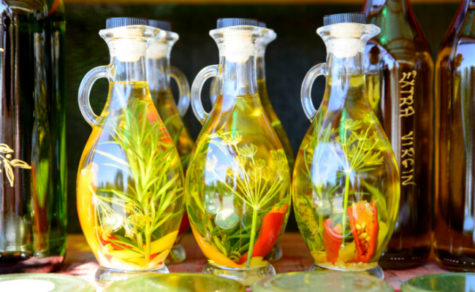
You can infuse any plant matter into vinegar to create your own funky blends! Although the preferred vinegar to use is organic apple cider you can use white or red wine vinegar too. A tip for jars is to check out second hand shops; there are some really nice bottles to be had out there!
Place several plants of your choice into the bottle. Fresh (clean and free from moisture) plant matter is best to use. You can even make an onion and garlic vinegar! Seal the bottle or jar you are using.
- Word of caution:
If you use a mason jar do not use the metal lid plate, use plastic because the acids can corrode the lid.
Let sit in a cool area (does not have to be dark) for 5 weeks; and after 2 weeks there will be flavor and you can test it. If you want it stronger let it sit longer. (I let my onion and garlic vinegar sit for 3 months before using it – wow!!)
Be sure to label your vinegar with what it is and the date you made it.
From: Edible Wild Food
How to Make Herbal Oils
Oils infused with herbs are a great way to utilize the healing properties of plants which contain volatile oils and fats.
Plants containing volatile oils are generally those commonly used in aromatherapy but they can be used as a salad oil too. Aromatic plants such as lavender, rosemary, thyme, sage, peppermint, chamomile, rose, yarrow, juniper and pine all make great oils.
You can use a variety of different oils as the base for the infusion. Olive oil is classic for the leafy herbs, sunflower, sweet almond, jojoba, or apricot oil all make a great base for creams and salves.
How to Infuse
You can use dried or fresh plant material, although fresh is generally best (except calendula-dry). If using fresh herbs, pick them on a dry day after the sun has dried the morning dew.
Make sure you pick clean plant matter; this is particularly important as you are not going to wash the plants. It must be as dry as possible to prevent spoilage, if there is any dirt brush it off with a soft-bristle brush or simply shake.
If using leaves such as comfrey or plantain, it’s good to let them wilt overnight to reduce some of the water content but flowers are best used fresh.
Chop fresh leafy herbs finely and lightly fill a sterilized, dry jar with the material. It’s important to cut the herb first as it exposes more of the plant to the oil, making for a better infusion. Flowers can be put in whole and dried herbs will most likely come already cut.
Fill the jar almost to the brim with oil because an air gap will promote oxidation and spoilage. Stir the contents with a wooden chopstick until all air bubbles have dispersed then place lid on.
You can leave it to infuse on a sunny windowsill or in indirect light.
Stir every day for the first two weeks then leave to infuse for another two to four, that’s four to six weeks in total. Calendula and some other oils are nice to double infuse- leave for 3 weeks, strain, then fill the jar with fresh flowers and pour the partially infused oil back on top and repeat the process.
Don’t forget to label your jars so you remember when to strain them. Strain through a sieve covered in cheesecloth or a jelly bag. If you used fresh material it is wise to let it stand for a week and check if any water has settled in the bottom of the jar. If so pour off the oil and discard the water.
Bottle the infused oil and be sure to label it including the best before date of the oil from the original bottle.
From: Edible Wild Food
How to Make an Herbal Tea
The standard way to make an herbal tea is to pour slightly cooled boiled water over the material to be infused, let it stand for 5 minutes, strain it, and drink it. You can let it stand longer if you want stronger flavor. You can save the strained plant material for another cup of tea because as long as you get taste and color – it’s still good to use.
The reason why boiled water should be allowed to cool for 5 minutes before pouring it on the plant material is because boiled water can harm the nutrient levels. In particular, vitamin C is denatured at 158° Fahrenheit or 70° Celsius. The same goes for cooking foods containing vitamin C.
- Fresh plant material
When a recipe refers to fresh plant material to be used, a 1/8 cup fresh material is typically used in a large mug, (or a few leaves), following the method above.
- Dried material
When a recipe refers to using dried material, use 2 teaspoons of material when making it.
- Bark or seeds
Should the recipe call for bark or seeds to be used, use 2 teaspoons of seeds or 1 tablespoon of bark.
- Sweetening your infusion
You could sweeten your nourishing herbal drink with honey or cane sugar should you so require, and a dash of fresh lemon juice may also enhance the taste.
Note:
When making herbal teas – make lots! Use it to make your rice, quinoa or couscous. Use cooled tea to water your houseplants to give them added nutrients
Source: Edible Wild Food
Oatmeal Pine Muffins
- 1 1/3 cups flour of your choice
- 1 cup quick cooking rolled oats
- 1/4 cup brown sugar
- 1/2 cup raisins
- 3 tbsp (heaping) pine powder
- 1 tbsp baking powder
- 1 egg
- 1 cup milk
- 2 tbsp melted butter
Instructions
If you are unfamiliar with pine powder, it’s very simple to make, here’s a link: Pine Powder.
Preheat oven to 375 degrees. Grease muffin tins. Combine the first 6 ingredients. Add egg, butter and milk then stir until the flour is moistened. Fill muffin cups 3/4 full. Bake 20 minutes or until an inserted knife comes out clean.
Found at: Edible Wild Food
Pine Powder
Pine needles are full of vitamin C, and have an interesting flavor. They can be powdered and added as a dry ingredient in cookie and other recipes. Here’s how:.
Collect pine needles (still on the branches) and hang them in your home to dry (choose a dry area of your home). After 2-3 weeks (depending on moisture levels in your home) remove the needles from the branches (it is OK if little bits of branches get into the needles).
Place the needles into a good quality coffee grinder or mixer and grind into powder!
Found at: Edible Wild Food
Pine Needles ~ Benefits and Nutrients
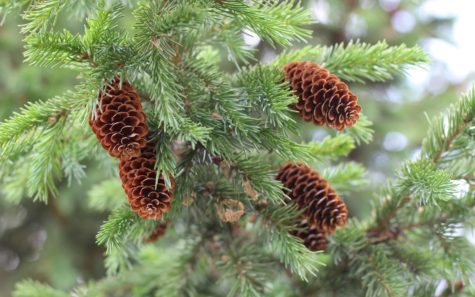
Pine needles range in size from 3 to 5 inches and are a deep forest green color. The long, thin needles vary slightly from variety to variety, depending on the region in which they grow. Pine needles have a strong pine scent, and a biting resinous flavor. In the wild Pine needles can be foraged year-round.
Foraged Pine needles can be used for a variety of applications. Pine needles are used most often for the oils and aroma within, to impart a pine scent or flavor to teas, ice creams, and liquors. Pine needles can be used like applewood or mahogany in fires to smoke meats or chicken, adding a hint of pine flavor. Place Pine needles under fish while cooking or chop like rosemary and add to marinades or brine. A variety of recipes can be found here.
Nutritional Value
It is said that Pine needles can be used as a natural remedy for up to 80% of human diseases. Pine needles are high in vitamin C; a tea made with the needles of the Pine tree has been used to stave off scurvy when no other sources of vitamin C were readily available. In a tincture or tea, Pine needles can help alleviate congestion and other respiratory problems. Components in Pine needles have decongestant, disinfectant and wound healing properties.
- Vitamin C Content
Pine needles purportedly have three to five times more vitamin C than an orange, depending on what source you read, but there’s no hard and fast rule for how much C is in a pine needle.
Regardless of the exact percentage, we know that pine needles and pine bark make an excellent natural vitamin C supplement. At least they’re potent enough to cure scurvy, a chronic condition caused by vitamin C deficiency that, left untreated, results in death.
One historical account relates the 1536 story of French explorer Jacques Cartier, whose crew was cured of scurvy with a tea of pine needles and bark given to them by the Iroquois after the crew suffered months of nutritional deprivation at sea.
Even though the crew boiled the decoction, which would have destroyed a significant portion of the vitamin C, there was still enough ascorbic acid and various amino acids to completely reverse their symptoms of scurvy.
It was such a dramatic change, the tree used for tea became known as “tree of life”. There’s no way to determine exactly what species it was, but we know the tree of life was a conifer. Eastern white pine is just one of the handful of candidates that could have been used.
The ascorbic acid (vitamin C) content of pine needles seems to vary significantly depending mainly on the species of pine and the age of the needles. The Eastern white pine needles of this USDA Forest Service study had between 0.72 mg and 1.87 mg of ascorbic acid per gram of pine needles.
New needles had the lower concentration, while 1 year old needles had 1.18 mg of vitamin C per gram of needles, and 2 year old needles had as much as 1.87 mg.
According to the USDA, 100 g of orange has 53.2 mg of vitamin C, or .532 mg/g. That puts pine needles at slightly more vitamin C for new needles, twice as much for 1 year old needles, and 3.5 times as much vitamin C for 2 year old needles.
The gist of the research is that ascorbic acid content increases with the age of the needles. Does that mean older needles are best for pine needle tea? Not if you’re after taste. Older needles make a stronger, bitter, more piney tasting tea, so if you want a milder, more delicate tea, look for brighter green young pine needles.
And don’t boil them. Boiling not only destroys vitamin C, but it also releases more terpenes–the organic compounds that make pine smell like pine–making more of a turpentine-like tea.
Other research indicates that balsam fir needles have significantly more vitamin C than white pine, so species matters, and the bark of white pine has more than needles. If you want a more potent brew of vitamin C, throw in some pine bark, although I can’t vouch for flavor, since I’ve never tried it.
Although there are several species of pine that make suitable tea, Eastern white pine (Pinus strobus) is one of the trees more commonly associated with pine needle tea, probably for its superior flavor.
Health Benefits of Pine
There have been a number of studies done on the nutritional qualities and healing powers of pine needles and bark. Here are just a few:
- Cancer prevention
(Antioxidant, antimutagenic, and antitumor effects of pine needles (Pinus desiflora)):
“These results demonstrate that pine needles exhibit strong antioxidant, antimutagenic, and antiproliferative effects on cancer cells and also antitumor effects in vivo and point to their potential usefulness in cancer prevention.”
- Cardiovascular health, antioxidant, immune function
(Comparison of methods for proanthocyanidin extraction from pine (densiflora) needles and biological activities of the extract):
“Flavonoids are known to be effective scavengers of free radicals. In particular, proanthocyanidins are flavonoids that possess cardiovascular protection, antioxidative activities, and immunomodulatory activities…In this study, we discerned an efficient extraction method to achieve relatively pure proanthocyanidins from pine needles and evaluated the biological functions of the resulting extract, which could potentially be used for its efficacious components in functional food products.”
- Potential treatment for anxiety, depression, and dementia
(Effect of new polyprenol drug ropren on anxiety-depressive-like behavior in rats with experimental Alzheimer disease):
“The obtained results…indicate that Ropren [a trademarked preparation based on extract of spruce and pine needles] is potentially active in the management of affective impairments in the experimental model under consideration. It also has a profound beneficial effect on the anxiety and depressive-like behavior in rats with model Alzheimer’s type dementia, and thus may prove to be a novel natural treatment.”
Dangers and Cautions:
Avoid pines that aren’t really pines. These include Yew pine (Podocarpus macrophylla) and Norfolk Island pine (Araucana heterophylla). And stay away from the highly toxic yew (genus Taxus).
Most sources warn of the potential dangers of pines like Ponderosa pine (Pinus ponderosa) and Lodgepole Pine (Pinus contorta), citing the possibility of abortion from drinking tea made with these species. And some sources say all pines could potentially cause abortion.
According to Green Deane Jordan of EatTheWeeds, pine needle tea drunk in moderation shouldn’t cause any problems unless you’re allergic to pine:
“The basis for this rumor is a veterinary study decades ago. If you are a cow and you eat many pounds of Ponderosa Pine needles you have a 5 to 8 percent chance out of 100 of having an abortion or still-birth. If you boil a huge amount of pine needles in water for hours down to a small amount of gross liquid and you drink it, then maybe it would cause an abortion. A few of needles soaked in hot water is no threat to anyone except for possible allergies.”
If you’re worried about it, stick with tried and true Eastern white pine, and of course exercise moderation.
Sources:
Pine Needle Tea
Pine needle tea has been prized for thousands of years for its many health benefits. What’s so good about pine needle tea? Here’s what I found out at Forest Holidays:
- Pine needle tea has a pleasant taste and smell (always a good start).
- It is rich in vitamin C (5 times the concentration of vitamin C found in lemons) and can bring relief to conditions such as heart disease, varicose veins, skin complaints and fatigue
- Vitamin C is also an immune system booster which means that pine needle tea can help to fight illness and infections.
- Pine needle tea also contains high levels of Vitamin A, which is good for your eyesight, improves hair and skin regeneration and improves red blood cell production.
- It can be used as an expectorant for coughs and to help relieve chest congestion; it is also good for sore throats.
- It brings you clarity and mental clearness.
- It can help with depression, obesity, allergies and high blood pressure.
- Pine needles contain antioxidants. These reduce free radicals, which are harmful to humans and can cause disease.
- Taoist priests drank pine needle tea as they believed it made them live longer. There is researched evidence that pine needle tea can help to slow the ageing process.
- Pick some pine needles and let them soak in boiling water on your stove and it will add a crisp pine smell all over the house. Perfect for Christmas.
How to make pine needle tea
- 1/2 cup young, bright green Eastern white pine needles
- 3 cups water
Instructions:
Bring water to a boil in a stainless steel pan. Add pine needles to water and reduce heat. Simmer for 20 minutes and remove from heat. Cover and let sit overnight or continue to next step and serve.
Strain out pine needles, sweeten to taste, and serve tea hot or cold.
Notes:
Make sure not to boil the pine needles in order to preserve the vitamin C and prevent the release of bitter terpenes. Vitamin C doesn’t last long, so drink this tea as soon as possible.
Pine Needle Tea In The Wild:
- Collect pine needles
- Build a fire
- Light it
- Boil water in a mess tin
- Add pine needles and let them infuse in the boiling water
- Sieve and serve
Enjoy your tea. Who knows, you might live to be 103 with 20:20 vision, a mind as sharp as a pine needle and no varicose veins. We’ll drink to that!
A word or two of caution:
Firstly, don’t try pine needle tea if you are pregnant. Secondly, most pine varieties can be used, but steer clear of Yew and Cypress which can sometimes be mistaken for pine. A good rule of thumb is to avoid flat needles. If in doubt, ask a Forest Ranger.
Found at: Forest Holidays
Evergreen Syrup
Spruce tip syrup used to be quite popular back in the day. It was used throughout Europe and by the pioneers in North America. Since Spruce tips grow in the spring, this syrup would have been a seasonal type of medicine. I generally make my evergreen syrup using needles and cones as these parts of the plant are most readily available, and have medicinal value as well.
Energetically, evergreens are super appropriate to use as medicine throughout the winter. Although most of the trees have lost their leaves by now, evergreens remain green, showing us that nature lives all year long. Evergreens are also helpful with the particular ailments that abound during the cold and dark season.
For the following recipe, I harvested from Norway spruce (Picea abies) and White pine (Pinus alba). Not the time of year for the tips so I used needles, twigs, cones. It turned out quite delightful with a predominantly sweet taste and evergreen-almost citrus undertones.
Evergreen Syrup Recipe:
- White pine needles, some twig ~2 oz weight (other pine species can be used)
- Spruce needles, 2 cones ~2 oz weight (other spruce species can be used)
- Filtered water to cover
- Honey- half of the amount of decoction that remains (a 1:2 ratio honey:decoction)
- Water added to evergreens
The weights are listed because I had them handy, however there is no set amount – it all depends on how much syrup you want to make. Put the plant material in a pot and cover with water. Bring this to a boil and then lower to simmer until the liquid is halved. I used a spoon as a measuring stick. You can also have a measuring cup handy to pour the liquid back and forth until it measures half of water added.
Reducing the decoction to half of the original liquid took almost ten hours. The liquid is then strained out, put back in the pot without the needles, and then the honey is added. The amount of honey to add is equal to half the amount of concentrate, so 8 ounces of concentrate would require 4 ounces of honey, or a 2:1 ratio. Warm and stir the mixture, and the syrup is done!
Medicinal Uses for the Syrup
Tree medicine is very powerful when grounding is needed. It fosters opening up to old wisdom, and letting oneself be cared for by the Earth. The evergreen forest is quiet, and feels limitless and mysterious. Evergreen syrup is good medicine for reflecting, meditating, and otherwise conjuring up introspective energy.
Decomposition of evergreen needles lowers the surrounding soil pH to provide a particularly acidic environment, a fact that I find interesting and relevant to its use as an antiseptic.
In Europe, pine products have been used as medicine since the Middle Ages, and their medicinal properties are pretty uniform across the Pinus genus. It acts as a stimulating antiseptic for respiratory infections and stuck mucus, and is useful for bronchitis, and at onset of colds and flu to stop infection. Pine is also used for coughs and asthma.
Spruce is useful to cut phlegm in the throat and lungs, and for opening air passages. It is high in vitamin C content, and can also be helpful for bladder conditions and in cases of leucorrhea.
Overall, Spruce and Pine syrup is great medicine to have on hand during the winter and early spring season. It can be used for acute illness, and as a winter tonic to provide a bit of sunshine in the form of a local source of vitamin C.
Evergreen syrup is also really tasty, making it an easy medicine to work with as it can be added to hot water, porridge, pancakes, or taken straight.
From: Herb Geek
